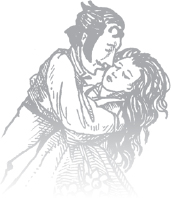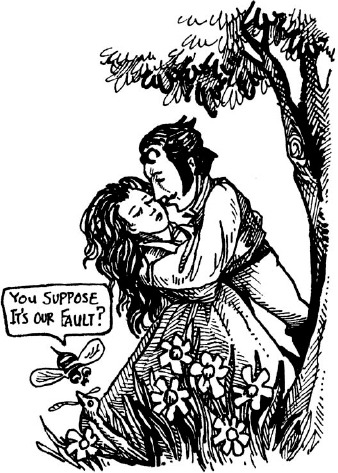

Music in the Romantic period (roughly 1820 through the end of the century) paralleled Romanticism in literature and art; it was marked by increased emphasis on melody, individuality, novelty, and emotion. Derived from the medieval romance, a poem or story about a heroic person or event, the word Romantic was associated with ideals outside of the everyday reality, such as things that were legendary, distant, or fantastic. The term started as a descriptor for the literature and art of the nineteenth century and was eventually applied to music of the time. Romantic music focused on expression of one's self and on the identity of the individual; furthermore, it sought to be original, extreme, provocative, interesting, and expressive. By contrast, music of the Classical period was marked by elegance, restraint, simplicity, and universal appeal. In this light, it is apparent that Beethoven indeed was the bridge between the two periods, for his compositions reflected the ideals of both periods.
Composers in the Romantic idiom sought to write music that would appeal to the amateur performers and audience, and they achieved this through offering something new and individual that made their compositions stand out in a crowd of music. They aimed to write memorable and tuneful melodies, interesting accompaniments, strong musical and extra-musical imagery, national and exotic styles, and evocative and exciting titles. Competition for sales of published music led to increasing innovations in harmony and tonality. As an art form, Romantic music placed great value on beautiful melodies and captivating harmonies within small forms such as short piano pieces and songs, although this ideal eventually translated into larger forms as well.
Romanticism was a direct reaction to the culture and society of Europe at that time. Science and technology were the driving force in societies and their economies, and Romanticism sought to escape this mundane reality to places that were mythical, dreamlike, or supernatural. As people began moving away from the countryside and into large municipalities, Romanticism embraced rural life and sought refuge and inspiration in Mother Nature. The Industrial Revolution brought about mass production and uniformity; Romantics regarded highly the individual, novelty, boundlessness, and the exotic. Art was no longer simply a means for making a living; it was a way to escape the realities of life and access a “higher realm.”

With these dramatic shifts in musical aesthetics, composers felt the freedom and desire to express an even wider and more intense range of emotions. While composers of the Romantic period showed deference to the traditional forms, the Romantic aesthetic pushed them to break the bonds of traditional form and explore new ideas in music. In some respects, instrumental music was the most ideal Romantic art form, as it was free from the limitations and concreteness of words and images, thus being able to express more than words themselves. Such instrumental works were considered absolute music, free from any associated words or images. Romantic composers also wrote characteristic music (a piece that suggests a mood, personality or scene that is usually suggested by the title) and programmatic music, a work that specifically recounts a particular narrative or tale, often delineated in an accompanying text called a program.
This brief description of the development and aesthetic ideals of the Romantic period will help you better understand the music (and context) of Romantic composers in the next four chapters.